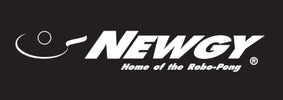The Penhold Reverse Backhand
By: Richard McAfee, USATT Certified National Coach
Traditionally, penhold players used just one side of their racket, held in a pen like grip. This grip produces a very strong forehand style of play with a rather cramped, less versatile backhand.
Perhaps the most innovative new stroke technique of the last ten years has been the development of the Penhold Reverse Backhand. First made famous by former Olympic and World Champion, Liu Guoliang, this stroke has now become standard fare for almost all penhold players.
This stroke has revolutionized the penhold style by allowing penhold players to develop backhand techniques that are as strong as their shakehands counterparts. The advantages of this stroke are:
- The ability to produce a true backhand loop
- The ability to extend the reach of the backhand stroke
- The ability to use rubbers of different surfaces
- The ability to easily attack high balls with the backhand
Stroke Description
The name of the stroke, the Reverse Backhand, describes the stroke. Using the traditional penhold grip, the racket’s regular playing surface is rotated towards the player, which makes the reverse side (backhand side) point towards the opponent. The player then executes a very traditional backhand stroke, loop or counter.
Learning the Stroke
When first learning this stroke, you will probably find the wrist position somewhat awkward. However, it should not take long before it begins to feel natural. Your Newgy Robot is the perfect practice partner when learning this or any new stroke technique.
Key Stroke Elements:
- While either Chinese or Japanese Penhold grips can be used. Most players will extend the fingers (Japanese style) when using the Reverse Backhand Stroke.
- Do not over use the wrist. This stroke is mostly executed by extending the forearm.
- Contact the ball early. The natural wrist position for this stroke puts the racket in a closed position. You can lay the wrist back a little by pushing with your thumb. With this in mind, contact your loop against backspin at the top of the bounce. Contact your counter drives when the ball is on the rise.
Stroke Videos
Our thanks to Phillip Gustavson, Atlanta, GA, for volunteering to demonstrate the Reverse Penhold Strokes. Phillip is unusual, as he is a native American player who decided to learn the penhold style. Phillip plays a traditional penhold pips-out hitting game combined with strong reverse backhand loops and smashes.
Video One – Penhold Reverse Backhand Loop Against Chop
You will notice how much this stroke resembles the shakehands backhand loop. Phillip starts the stroke low between the legs and generates a lot of lift with his legs. Also notice that he contacts the ball at the top of the bounce (do not let it descend). He then strokes towards his target, using mostly the forearm.
Video Two – Penhold Reverse Backhand Counter-Drive Against Topspin
Notice the natural closed position of the racket that the Reverse Backhand Grip produces. This makes counter driving and smashing very easy against topspin. Remember to hit flat, pressing through the ball, and not letting the wrist “roll over”. Also notice, how early Phillip is contacting the ball.
Conclusion
Ten years ago, many coaches felt that the penhold style of play would soon die out as the backhand was just not strong enough to keep pace with the development of the strong backhand loops of the shakehand players. The Reverse Penhold Backhand has changed all that. Players such as Ma Lin and Wang Hao of China, exponents of this new style, are at the top of the World Rankings.
Regardless of your level of play, if you are a penholder, you should strive to add this new technique to your game. It will open up a new world of possibilities for your style and your opponents will not know what hit them.
Next month, I will cover more drills designed to help you integrate these new strokes into your game.





